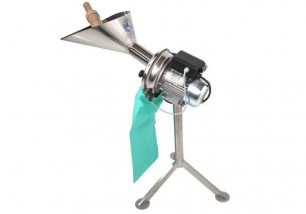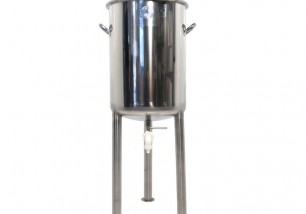Ultrasonic extraction
A process that permits the extraction of active ingredients contained in the plant, taking advantage of the mechanical action of ultrasound on the plant walls.
What are ultrasounds?
Ultrasound refers to those mechanical sound waves whose frequency is higher than 20 kHz and smaller than 10 MHz. Ultrasonic extraction generally uses a reduced range of frequencies (16 kHz-100 kHz) because higher frequencies would result in too much energy that could lead to the degradation of active ingredients in the plant structure.
For this type of extraction, it is necessary that there is a liquid medium that permits the ultrasonic wave to permeate the plant product. Ultrasonic technology allows the complete extraction of plant material, conserving the integrity of all of the molecules contained in the plant, whether they be thermolabile (proteins, amino acids, vitamins, enzymes, etc.), thermostable, water-soluble, or fat-soluble. This is made possible because the vibration of the ultrasonic waves that provokes the mechanical breakdown of the cell walls. One obtains a stable totem mixture of the molecules contained in the plant cell in a just a few minutes.
Often, to make the extraction more efficient, one proceeds with a preventative grinding of the plant material: the plants become shredded through common mills, and successively premixed with the solvent. In this way, the liquid used already begins to soak in the plant matter, increasing its volume. This operation becomes very important when one is in the presence of very durable or tough vegetable matter (cortices, roots, seeds, etc.).
For the entire time of extraction, the plant material is maintained in suspension with a light agitation in order to let the ultrasound penetrate all parts of the plant.
PRINCIPLE ADVANTAGES OF EXTRACTION THROUGH ULTRASOUND WITH RESPECT TO CONVENTIONAL MACERATION:
Substantial reduction in production time, because the ultrasounds traveling to break the cell walls diminish the transfer time of the active ingredients from the plant material to the solvent. It is possible to obtain a liter of macerated solution in only 15 minutes.
It is an extractive technique that has been given the “bio” accreditation, being solely a physical extraction process with no added chemicals. It uses only natural solvents (oil, water, and alcohol) independent of the solubility of the active ingredients. Very satisfactory yields are obtained in terms of active ingredients since there is almost complete depletion of the plant material.
However, with ultrasounds it is not possible to achieve a selective extraction because there is a complete discharge of all the molecules contained in the plant matter independent of the affinity with the solvent used. If you want to get the separation of the active ingredients contained in the plant mass, subsequent methods must be carried out.







